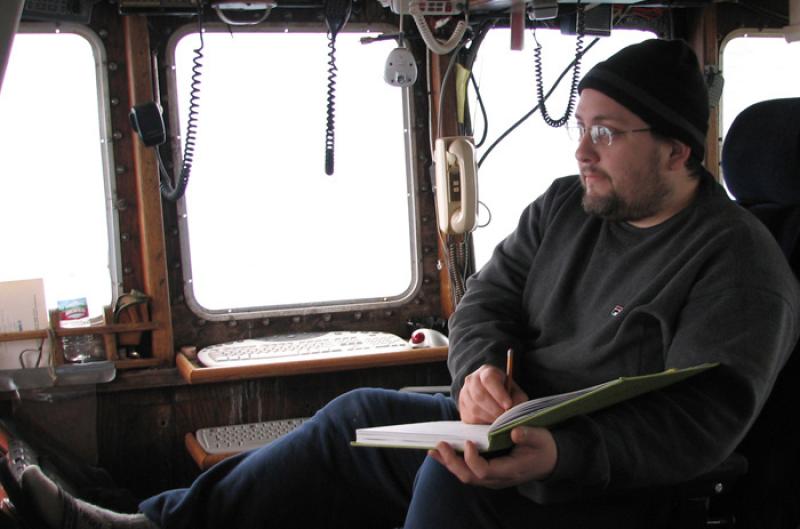Have you eaten a McDonald’s Filet-O-Fish sandwich lately? If you have, you’ve eaten walleye pollock from Alaska. It’s not the fanciest fish in the world. But it’s the largest fishery by weight in the United States and one of the largest in the world. Fishermen landed almost three billion pounds of walleye pollock in 2011. The dockside value of that haul was just under $375 million.
It’s not only a big fishery, it’s also a well-managed one. NOAA Fisheries scientists conduct multiple pollock surveys each year to keep close tabs on the population. That, in turn, allows managers to set catch limits that result in a high but sustainable yield.
There’s very limited scientific data about what the pollock are up to in winter, however, when rough conditions in the Bering Sea make fish surveys difficult and expensive. But Steve Barbeaux, a scientist at NOAA’s Alaska Fisheries Science Center, has come up with a clever solution.
Many pollock boats are big enough to handle winter weather on the Bering Sea, and they fish year round. To find the fish, they use sonar, which displays what’s beneath the boat on a computer screen. Back in 2002, Barbeaux asked a bunch of boat captains if he could hook up external hard drives to their sonar units and keep a running record of everything they saw on screen. The captains agreed.
With the data he collects, Barbeaux sees what the fishermen see. He’s been doing this for nine years now, and has what amounts to a giant video surveillance system on the Bering Sea. He’s getting a dynamic picture of what pollock are up to in winter, and he can directly observe how the distribution of pollock changes in response to changes in water temperature, ice cover, storm surges, and other variables.
"How might these fish potentially change their distribution under conditions of climate change?" asked Barbeaux. That’s a question that boat owners, who have high capital costs and are invested in the long-term, are keen to see answered. "Now that we have ten years worth of data, we can start looking at that question."
Read Steve Barbeaux and colleagues' recent research paper in the ICES Journal of Marine Science.
To learn more about the research that NOAA is conducting in the Bering Sea and the North Pacific Ocean, visit the Alaska Fisheries Science Center website.

